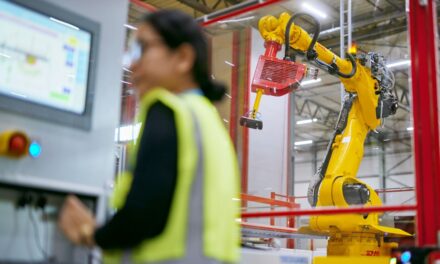
DHL ‘will have world-class infrastructure in India by 2005’
DHL, wholly owned by the world's largest transport and logistics company, Bonn-based Deutsche Post World Net, is truly global. DHL's network covers 120,000 destinations in more than 200 countries and territories, employing over 160,000 people,420 aircraft, and 75,000 vehicles . It has 36 hubs, 900 depots, 238 gateways and 5000 offices. DHL handles one billion shipments every year catering to the requirements of 4.2 million customers. In the Asia-Pacific region also DHL is the clear market leader. The size of business amounts to euro 3 billion on a customer base of 250,000. More than 40 million shipments and 623 million kg of freight and over 430,000 TEUs are handled through six hubs employing 20,000 employees, 5000 vehicles and 20 dedicated freighters. About 800 commercial flights are operated per day. Mr John Mullen, CEO of DHL Express in Asia Pacific, recently spoke to Business Line in Hong Kong.
Excerpts from the interview:
In our part of the world, DHL is still perceived more as a transporter of documents than a provider of total logistics services. Why this is so? Are you doing anything to clear this perception?
The perception, if any, is only partially correct. That DHL is more a transporter of documents than anything else is a view held by general public, not by industry, certainly not by our customers. But, then, perception of the general public is due to its origin.
Our company did start as a carrier of documents internationally. We have come a long way since. We now offer a wide variety of services. In India, we are the biggest express operator offering various quality products. In the Asia Pacific, documents account for less than 20 per cent of our express business and worldwide less than 10 per cent. We have no trouble in what general public think about us.
How important is India as a market?
India is an interesting market. Compared to its size, the volume of business is surprisingly small and we place it in the medium category along with countries which are much smaller such as Thailand, Malaysia, Indonesia and the Philippines. But in our estimate India, along with Japan and China, will emerge as one of the most important markets for us.
What are your plans to cater to what you perceive is going to be a very important market for you?
We are the market leader in India and we will continue to be so. We'll stay Number One. We are stepping up our services, coverage and capacity by strengthening infrastructure. We now operate one weekly freighter (MD-11 aircraft) out of India (Delhi); our plan is to launch one more MD-11 freighter by 2005 from Mumbai… most probably. We're still working on it and no decision has been taken yet. We have plans to upgrade our gateways in Mumbai and Bangalore . We'll have more vehicles, more service centres and better facilities such that by 2005 we have world-class infrastructure in place in your country.
What is your major concern about India?
Frankly, we do not have too many concerns. The economy is growing and with it our business. We firmly believe that we've good future in India. The biggest challenge before us is how to step up our investment in keeping with the growth, because in a competitive environment only the best will prosper. The end of the quota system for textiles will benefit India and the country will be the winner. We look forward to it because we already transport large volumes of textiles and fashions out of India.
In a network business like ours, every country is important to us and we try to give equal focus on infrastructure and quality of services. Today, Japan is our biggest, and also the most important market but, as I've already indicated, India and China too are emerging as core drivers of our business.
The Asia Pacific is certainly an important market to DHL because of its high growth yet the region accounts for a mere 10 per cent of DHL's worldwide business. Do you expect a higher share for the Asia Pacific in the coming years?
Historically, the American and European markets have been very large. However, those markets are not growing as much as the Asian markets. In the first half of 2004, the growth of the Asia markets was close to 20 per cent against 13/14 per cent last year. The growth of the North American or European markets was nowhere near it. If this trend persists, it will not take long for the Asia Pacific to have a higher share in DHL's total worldwide business.
The express business accounts for nearly 60 per cent of your total business in the Asia Pacific. Will it continue to be so in the coming years?
We are strengthening our logistics solutions business, which holds out big promise. As of now we're not strong in this segment. Together with air and ocean freighting, we will provide total logistics solution which is a big market, though a bit fragmented.
What about operating in the domestic market?
We're looking at it but no firm decision yet. The domestic operation, being commercially competitive and often subject various regulatory systems, is different from the international operations. Right now, we do undertake some domestic business in China on a limited scale. But what we are targeting are the big domestic markets of countries such as India, Japan and Australia. Japan is our prime target but it is a tough market because of its sophistication and specialisation.
Where do you like to go in three to five years or 10 years from now? Have you set any target? What kind of investment will be needed?
Our business is driven by customer demand. Assuming that the world economy will grow, it is certain that the Asian slice of the pie will continue to be larger and larger. In the Asia Pacific, if we grow even at the current rate, our business will double in five years and we will have to invest heavily in infrastructure. In past three years, we invested $1.1 billion in the Asia Pacific. Our investment plan for 2005 will be finalised shortly. We have no doubt that 2005 will be a good year for us.













